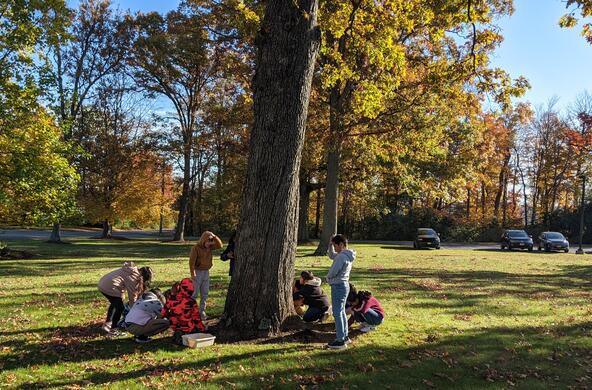For over two decades, IES scientists have been paying close attention to conditions in the Hudson River. Through collaboration and perseverance, they have amassed world-class datasets on invasive species, aquatic food webs, and nutrient pollution. While this information is essential to effective management of the river, it is also a rich resource for educators who want to bring real ecology into the classroom.
Learning is enhanced when students can apply lessons to the world that they live in. The Changing Hudson Project seeks to engage students in ecology by connecting them with current research about the Hudson River. By using an important local resource, and drawing on the expertise of practicing scientists, lessons come to life.
Initiated in the fall of 2006, the Changing Hudson Project is a collaboration among IES scientists, IES educators, and classroom teachers. Directed by Dr. Alan R. Berkowitz, Head of the IES Education Program, the target audience is students from 9th grade to community college. What began as a pilot project has expanded to include fourteen teachers throughout the region.
Ms. Janine Guadagno, a biology teacher at Christian Tabernacle Academy, comments, “The Changing Hudson Project allows students to engage in inquiry-based learning. Instead of being led by textbook examples, they are coming up with their own conclusions by manipulating actual measurements. They are closer to doing real science because they are using real data.”
This fall, under the guidance of Project Coordinator Ms. Cornelia Tutschka, participating teachers will be fine-tuning curriculum materials and improving methods of working with IES data in the classroom. Ensuring that teachers are comfortable navigating the large data is essential to effective instruction. Several times a year, workshops are held to train teachers in data manipluation tools such as Excel.
By sharing materials on the web, the project strives to reach out to a broader audience of educators. Modules have been developed about invasive species, land use, pollution, extreme weather, and the Hudson River ecosystem. Created by educators and reviewed by IES scientists, these materials draw on current research to stimulate inquiry and understanding. Lessons are tailored to support New York State learning standards, making them easy to integrate into existing curriculum frameworks.
Funding realities mean that many students are unable to do hands-on research in the river, but the streams and creeks that form the river’s watershed make perfect outdoor laboratories. These small-scale systems, such as Wappinger Creek (as seen above), can illuminate processes that are taking place in the river ecosystem. A number of lessons can also be performed using schoolyard study ponds and indoor tanks.
The Changing Hudson Project is made possible through grant support from the New York State Department of Environmental Conservation, the Hudson River Estuary Grants Program, and the Berkshire Taconic Community Foundation. Educators can access lesson plans and background readings.






